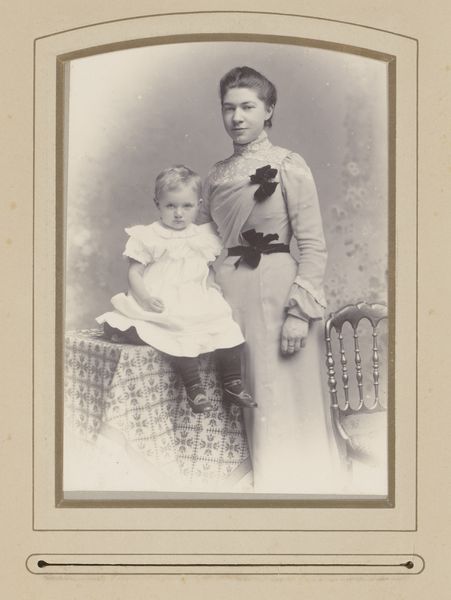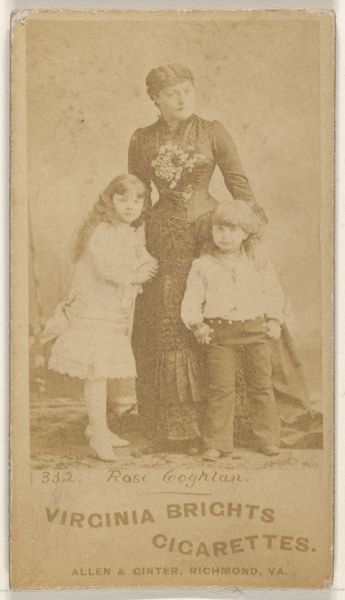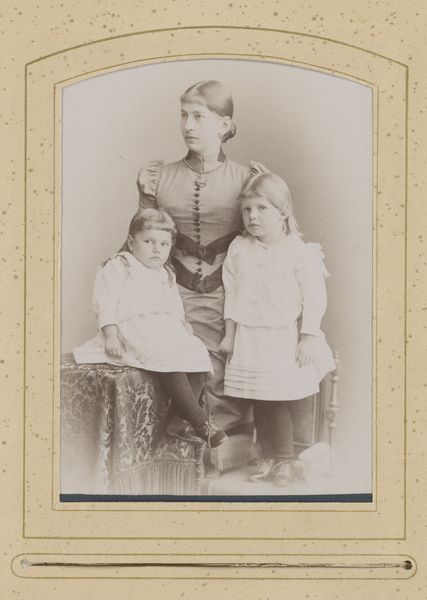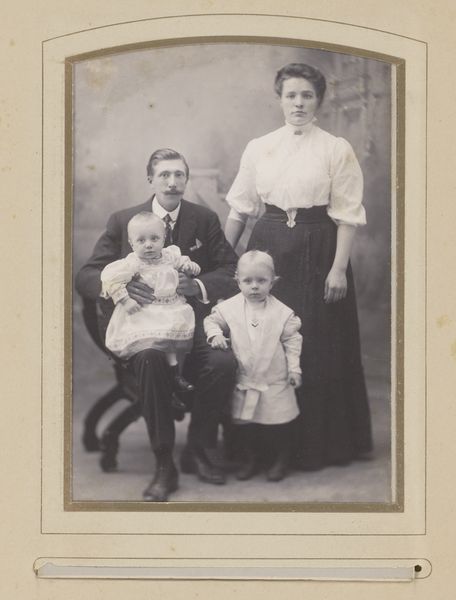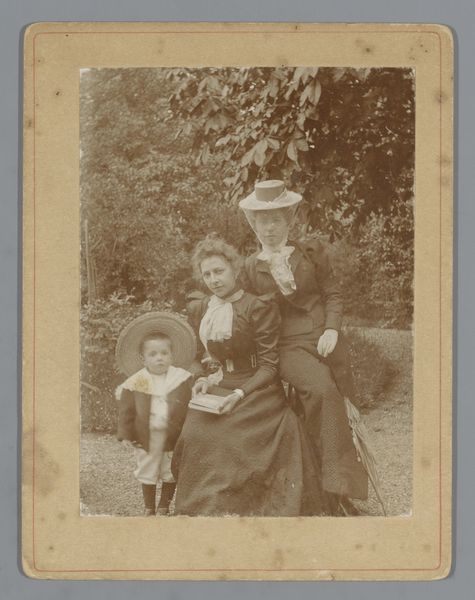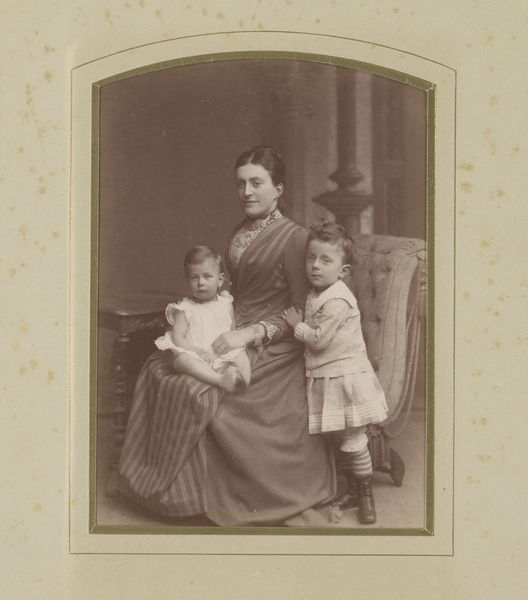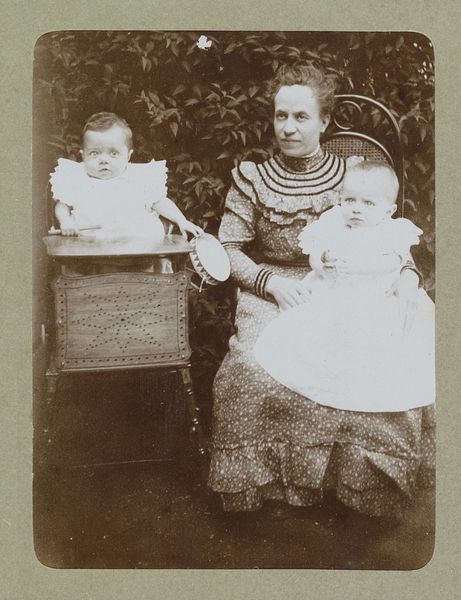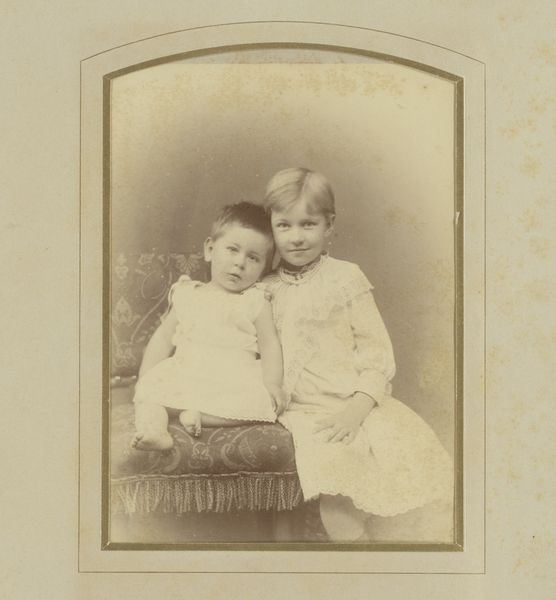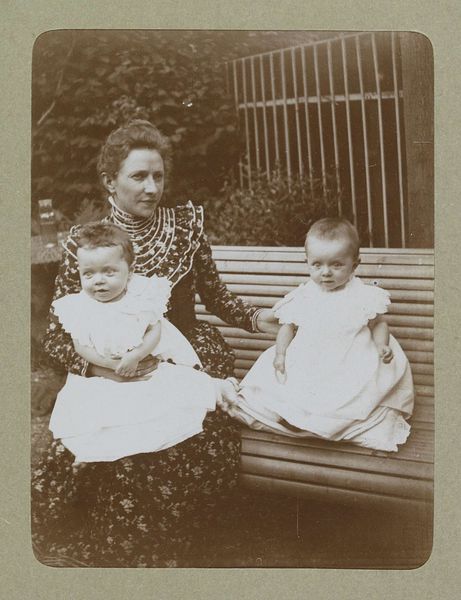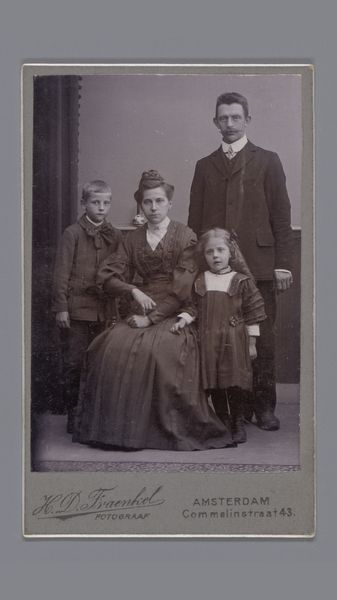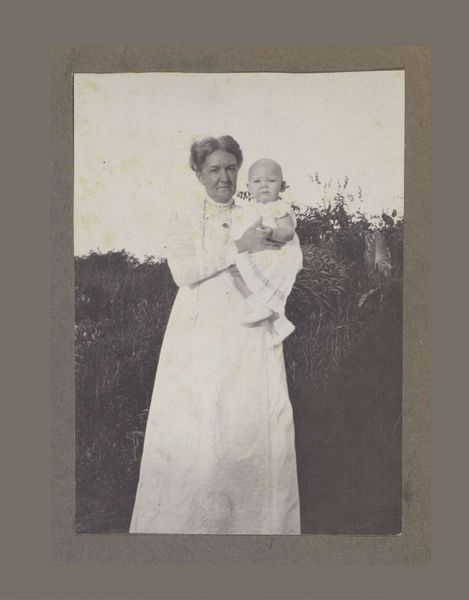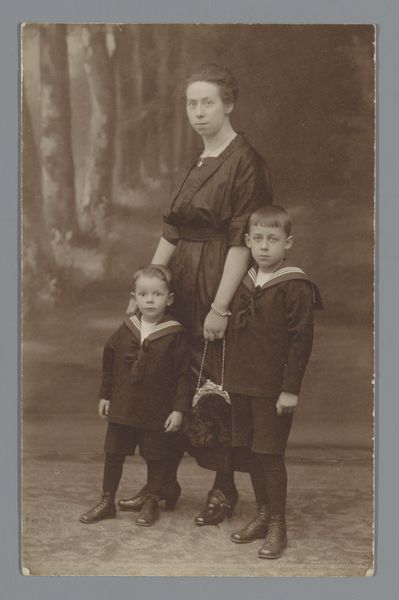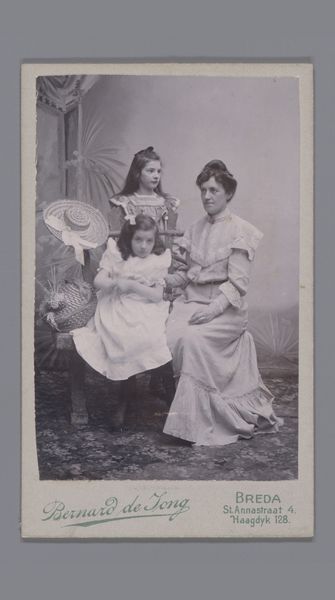
photography
#
portrait
#
photography
#
group-portraits
#
genre-painting
#
realism
Dimensions: height 167 mm, width 107 mm
Copyright: Rijks Museum: Open Domain
Curator: The sepia tones of this photograph lend a solemn gravity to what appears to be a formal family portrait. Editor: It strikes me as both intimate and profoundly unsettling, actually. There is something inherently uneasy about the juxtaposition of these figures. What are we looking at? Curator: What we have here is Augusta Curiel's "Portrait of an Afro-Surinamese Nanny with Two European Children," likely taken between 1906 and 1908. Curiel was one of the first female photographers in Suriname. The piece speaks volumes about colonial social structures. Editor: It does. Look at the textures, though! The nanny's crisp white dress contrasts dramatically with the foliage behind her, creating this layered effect. And those white clothes... they feel starched, almost unyielding. Curator: White would have certainly emphasized the perceived purity and respectability of the family. But let's consider who commissioned the image, and why. Was it a genuine gesture of affection, or a calculated presentation of social order? Editor: Absolutely. I'm also thinking about the material process, too. Given the period, photography itself would have been a carefully considered process for the elite, whereas for the nanny, what part did she have to play in that careful presentation? What did that entail materially and labor wise, for everyone involved? Curator: Precisely! This image presents the politics of labor and care through the visual language available to Surinamese society in the early 20th century. This photograph stages a very specific kind of public performance. Editor: It really feels less like an intimate 'portrait' and more like a documentation of power dynamics meticulously rendered through photography, as a process. Curator: I agree. The children, posed rigidly on either side of the nanny, become part of that system on display. We are not necessarily invited into a domestic sphere; instead, the boundaries of race and class are clearly, deliberately drawn. Editor: It pushes one to ask, where does art end and where does its functionality to the people of the time begin, within something like a photograph like this. The levels of materiality within that space... Fascinating, unsettling, but really insightful. Curator: It prompts us to think more deeply about the complex relationships embedded in seemingly simple images. Thank you for lending your perspective.
Comments
No comments
Be the first to comment and join the conversation on the ultimate creative platform.
